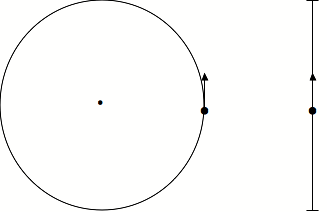The basic conjecture in Tao, the Chinese philosophy is that there is an underlying equilibrium of two opposing forces in nature. The Chinese call these the yang and the yin. The yang symbolizes the maculine nature of reality, the rational, calculating, analyzing side; whereas the yin represents the feminine, the more sensitive, delicate, conscious side of things. Chinese believe that all human life is an interplay between these two forces, and an equilibrium is desired between the two for a smooth functioning of things.
To a certain extent, the same idea is also seen in Indian thought as well. Indians once believed in the concept of purush and prakruti, which bear some semblence to the yang and the yin respectively. The concept of 'arda-narishwar' avatara of Shiva (having half woman's and half man's body) is also a representation of the same.
This duality is not only seen in human nature, but also in all things in life. Every aspect of life has this dual nature, or rather everything has these seemingly opposite extremes to itself. Good-evil, success-failure, life-death, expansion-contraction, up-down, positive-negative are all examples of these opposites.
The greatness of Chinese (and also Indian) philosophy lies not in the realization of this duality of things, but in overcoming the so-called opposite natures of the duality, and realizing the underlying unity in them. For this, a simple diagram is used (again from the book!).

Consider a path taken by a particle rotating in the circle. The particle is nature and it rotates along the circle of life. The basic nature of Nature is to keep rotating. However, the human conscience perceives this circle of life, not from the top as seen in the left side of the picture, but from side, as seen in the left; and hence sees a projection of the same! So, what we see is that the nature oscillates between two opposite ends, and hence the apparent extremes in everything! In the projection, there is an up and a down, a positive and a negative, which is essentially how we perceive the world!
The realization, then, is simply changing the frame of references from a projection to the real nature of Nature, that of the revolving circle! This is the Tao. This is also the moksha in Indian thought, where uplifting one from the cycle of life and death is desired! What is a consequence of this? We realize that there is nothing absolutely good or bad, but the Absolute is beyond good or bad! There is no complete happiness or sorrow, but the Perfection is beyond both of these. We realize ups and downs in life are not absolute, but the real nature of life is beyond both.
The daily grind of life is like running in the circle round and round and round, while consfusing ourselves with the false successes and failures. If we take a moment to look, we realize it is neither about running as fast as we can, nor going as high as we can; but about understanding that the highs and lows, ups and downs are but the two sides of the same thing, and that one is bound to follow the other. We do our work with this inevitable sequence in mind, and work without the desire of fruits in a completely detached fashion. This is message of Tao, this is the message of Gita, and this is the essence of life.
May we all lead our lives following this ideology and may we all proceed in our paths towards the realization of the true nature of life!

2 comments:
Kudos !!!!!!!!!!!!!!!!!!!
If duality is the nature, I believe transcending it is realization.
I could never really put up with Ying-Yang and Purusha-Prakruti, simply because I dont believe in duality.
But still a very good read. Thanks!
Post a Comment